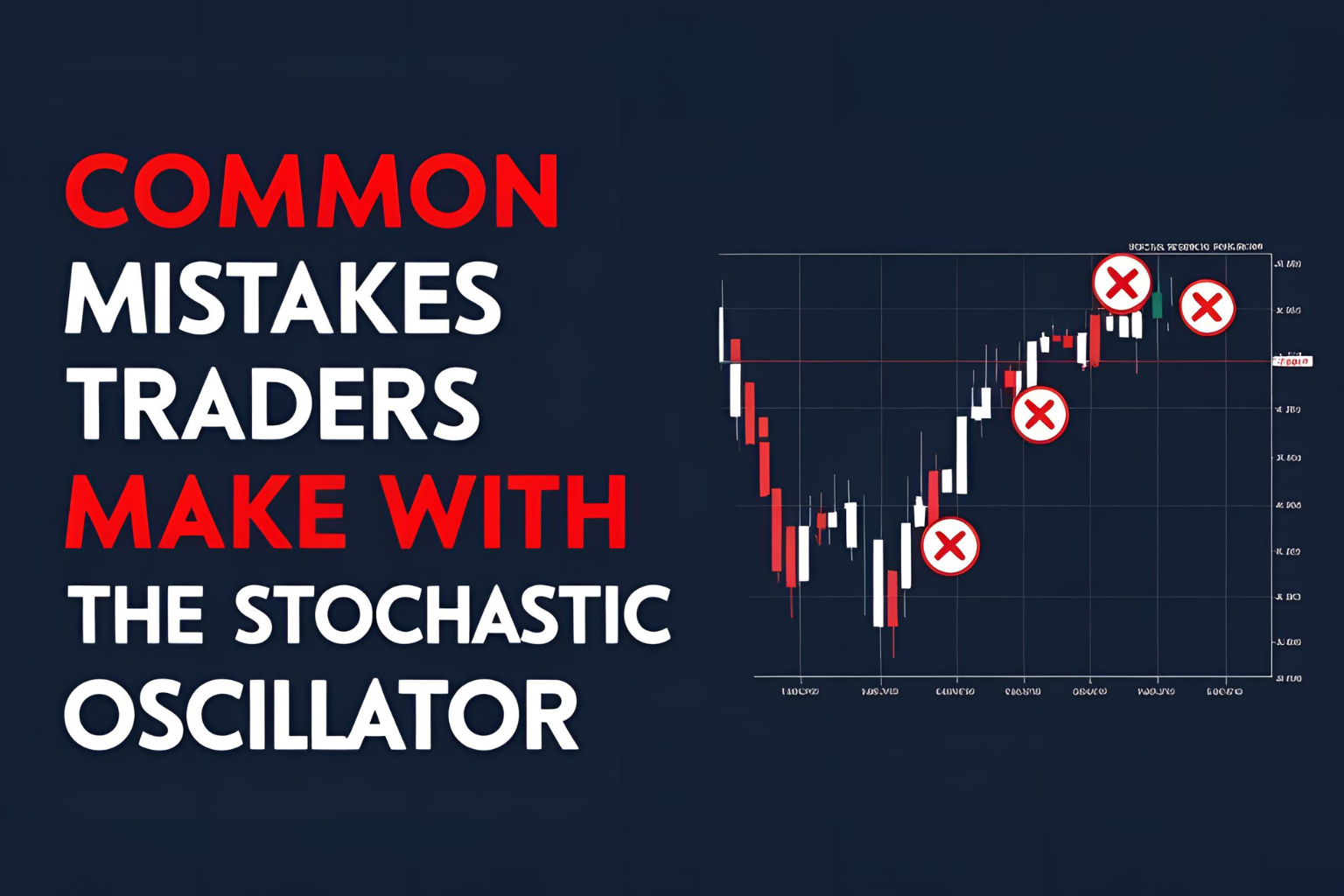Common Mistakes Traders Make with the Stochastic Oscillator
Introduction
The stochastic oscillator is one of the most effective momentum indicators—when used correctly. Unfortunately, many traders fall into predictable traps that reduce its reliability. In this article, we’ll highlight the common mistakes traders make with the stochastic oscillator and show you how to avoid them to improve your strategy and results.
Mistake 1: Trading Every Crossover
Many beginners take every %K/%D crossover as a buy or sell signal. While these signals are useful, they are not always reliable on their own.
Why it’s a mistake:
- False signals are common in trending markets.
- Crossovers in the middle of the range (between 40–60) are weak.
Fix it:
Use crossover signals only in overbought/oversold zones and confirm with trend direction or support/resistance.
Mistake 2: Ignoring Market Context
The stochastic oscillator performs best in range-bound markets. Using it blindly in all conditions can lead to losses.
Why it’s a mistake:
- In strong uptrends, the oscillator may remain overbought for long periods.
- In downtrends, oversold conditions can persist without reversal.
Fix it:
Always identify the market structure first. In trending markets, combine stochastic with a trend indicator (like moving averages or MACD).
Mistake 3: Using Default Settings Without Testing
The default setting (14,3,3) may not work for every asset or timeframe.
Why it’s a mistake:
- Different assets behave differently.
- A setting that works on a daily chart may fail on a 5-minute chart.
Fix it:
Backtest different settings (e.g., 5,3,3 for fast signals, 9,3,3 for smoother responses) based on your strategy and timeframe.
Mistake 4: Ignoring Divergences
Divergences between price and the stochastic oscillator are often overlooked—but they can signal powerful reversals.
Why it’s a mistake:
- Traders focus only on crossovers and miss deeper insights.
- Ignoring divergence misses early warning signs.
Fix it:
Watch for:
- Bullish divergence: Price makes lower lows, stochastic makes higher lows
- Bearish divergence: Price makes higher highs, stochastic makes lower highs
Mistake 5: No Risk Management
Even with strong signals, no trade is guaranteed. Many traders use stochastic without a stop-loss or proper risk control.
Why it’s a mistake:
- One bad trade can wipe out multiple small wins.
- Stochastic signals can fail during news events or high volatility.
Fix it:
Always set stop-loss levels and manage risk with proper position sizing.
Bonus Tip: Don’t Use It in Isolation
Stochastic is most effective when combined with:
- Trend direction tools (e.g., EMAs)
- Support and resistance
- Price action or candlestick patterns
Conclusion
Avoiding these stochastic oscillator common mistakes can significantly improve your trading performance. Like any indicator, stochastic is a tool—not a guarantee. Use it wisely, with proper filters and risk management, and you’ll unlock its full potential in any market.
FAQs
Q1. Can I rely on stochastic oscillator signals alone?
It’s not recommended. Combine it with other tools for confirmation.
Q2. Is it okay to trade stochastic in trending markets?
Only if combined with trend-following tools and confirmation indicators.
Q3. What’s the best way to avoid false signals?
Avoid middle-range crossovers and look for alignment with trend and price structure.
Q4. Should I change settings for different timeframes?
Yes. Faster timeframes typically require faster settings like 5,3,3.
Q5. How do I practice avoiding these mistakes?
Use a demo account to backtest strategies and refine your trading approach.




